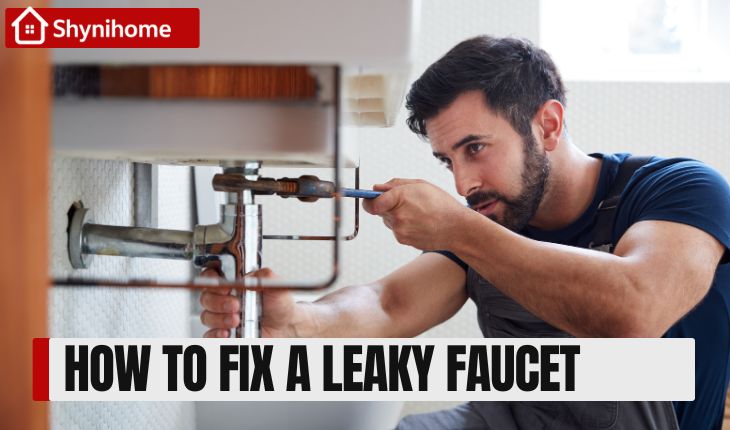
Learn how to fix a leaky faucet in just a few easy steps. This beginner DIY guide will help you save water, money, and avoid costly plumber visits.
Table of Contents
Toggle🚰 Why Fixing a Leaky Faucet Matters

A leaky faucet isn’t just annoying — it wastes water, increases your utility bills, and may cause water damage over time.
The good news? You don’t need a plumber. With a few tools and 30 minutes, you can fix it yourself.
🧰 Tools & Materials You’ll Need
- Adjustable wrench
- Screwdriver (flathead & Phillips)
- Replacement parts (washer, O-ring, cartridge — depends on faucet type)
- Plumber’s grease
- Towel or rag
- Bowl (to catch small parts)
💡 Tip: Turn off the water supply before starting any plumbing repair.
How to Fix a Leaky Faucet: A Step-by-Step DIY Guide

🔎 Step 1: Identify the Type of Faucet
Different faucets have different parts. Know which one you’re dealing with:
- Compression Faucet (two handles – hot & cold)
- Ball Faucet (single handle, ball mechanism)
- Cartridge Faucet (single or double handle)
- Ceramic Disc Faucet (modern, durable, single handle)
Look up your faucet model online or check the user manual.
🚿 Step 2: Turn Off Water Supply
Locate the shutoff valves under the sink. Turn both hot and cold valves clockwise to shut off the water.
Then:
- Turn on the faucet to release leftover water
- Place a rag or bowl in the sink to catch any drips
🔧 Step 3: Disassemble the Faucet
- Use a screwdriver to remove the handle
- Gently remove decorative caps or covers
- Use an adjustable wrench to loosen and remove the faucet stem or cartridge
⚠️ Keep the parts in order — take photos as you go to remember how to reassemble them.
🛠️ Step 4: Inspect & Replace Damaged Parts
Common parts that cause leaks:
- Worn-out washer
- Cracked O-ring
- Damaged cartridge
Take the old part to a hardware store or check the model number to buy a matching replacement.
🧴 Step 5: Reassemble with Care
- Apply a small amount of plumber’s grease to the new parts
- Reinsert the stem or cartridge
- Tighten everything gently with the wrench (don’t over-tighten)
- Reattach the handle and decorative pieces
💧 Step 6: Turn the Water Back On
Slowly open the water supply valves.
Check:
- If the leak has stopped
- Water flow and pressure are normal
- No drips or unusual noises
Congratulations — your faucet is fixed! 🛠️💧
🔄 When to Call a Plumber
If:
- The faucet still leaks after replacing parts
- The water pressure is low
- There’s corrosion or damaged plumbing
…it’s time to call a professional. But in most cases, DIY fixes work just fine!
👉 Also Read: Guide to DIY & Home Repair: Fix Your Home Like a Pro
🌱 Save Water, Save Money
A faucet leaking one drip per second can waste over 3,000 gallons of water per year.
Fixing it early means:
- Lower bills
- Eco-friendly habits
- Peace of mind
📌 Final Tips
- Use YouTube videos as a visual guide
- Always keep a faucet repair kit at home
- Regular maintenance = fewer plumbing problems
✅ Summary Checklist
| Step | Task |
|---|---|
| Turn off water supply | ✔️ |
| Disassemble the faucet | ✔️ |
| Inspect & replace parts | ✔️ |
| Reassemble & test | ✔️ |
